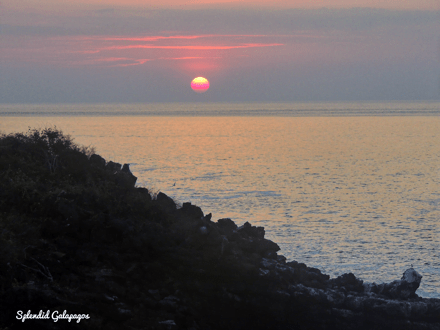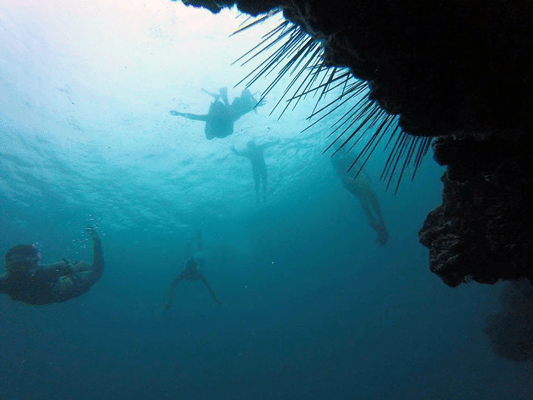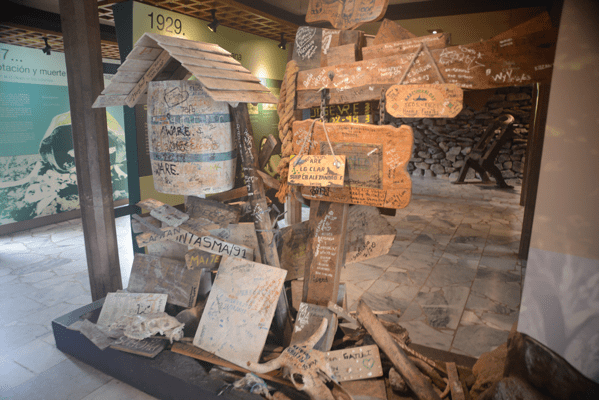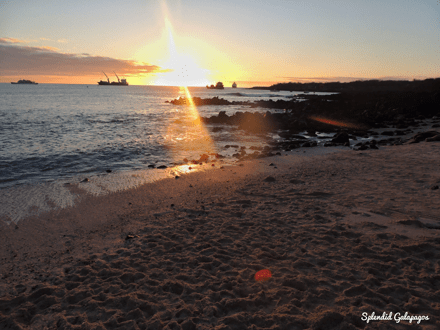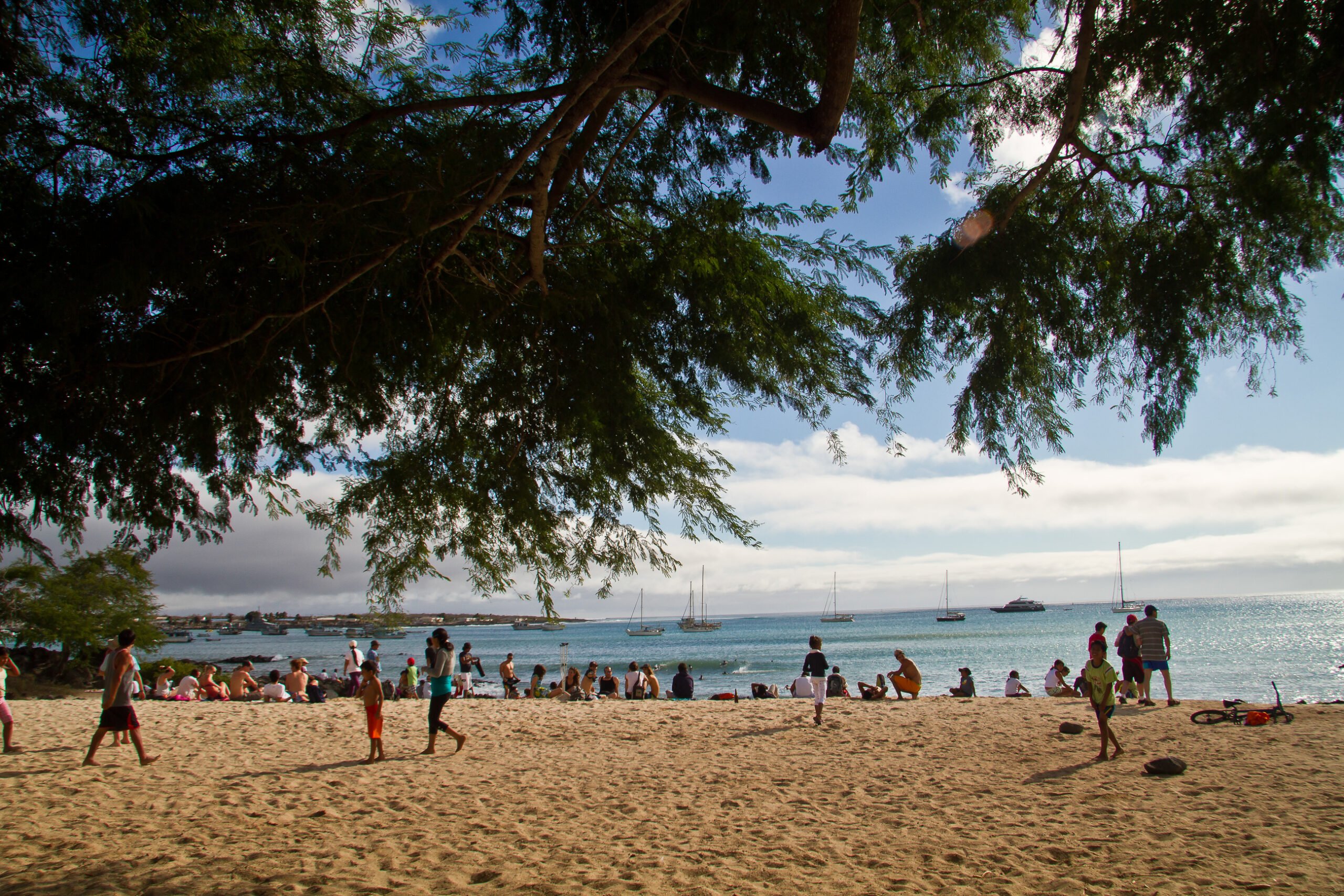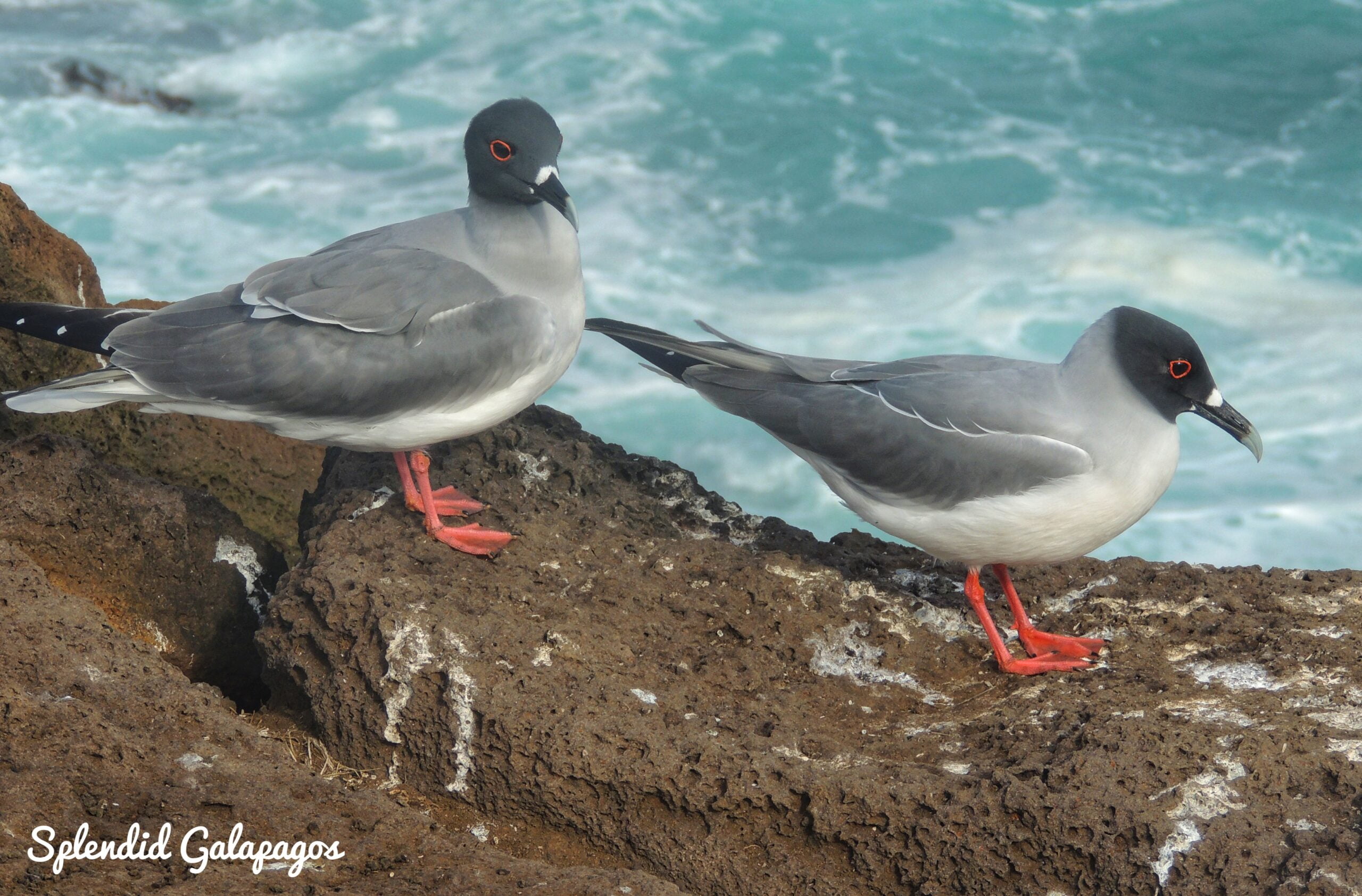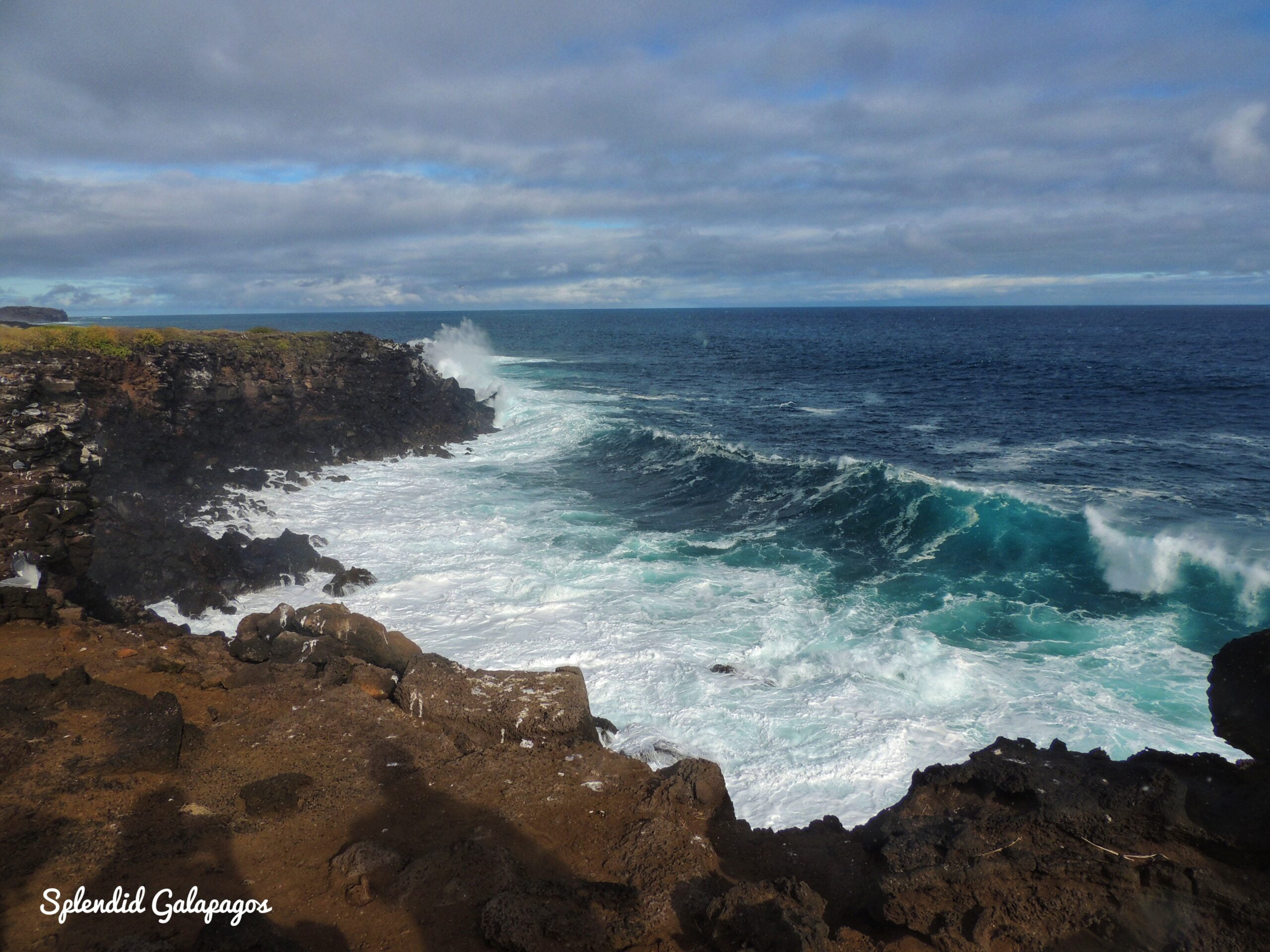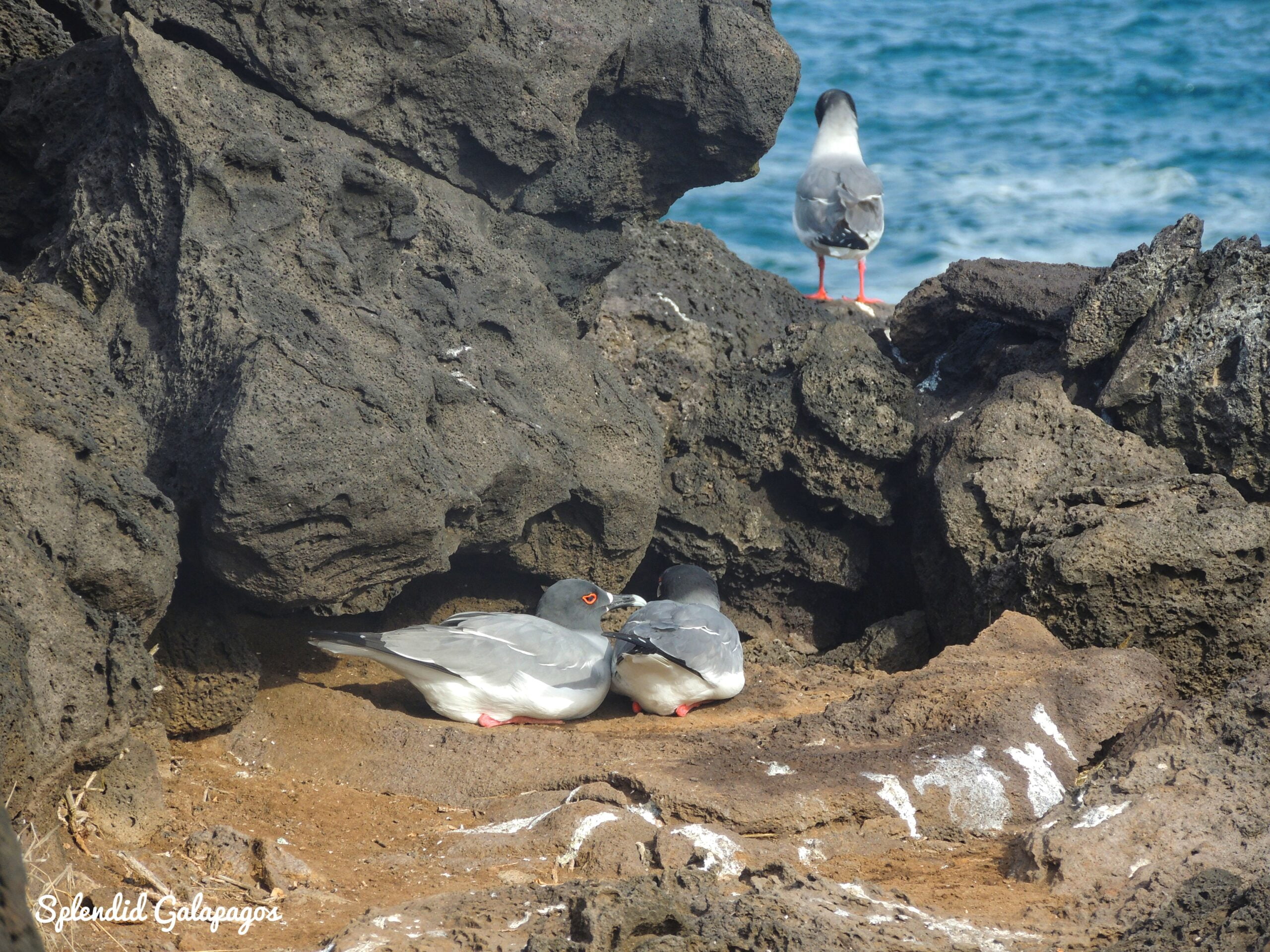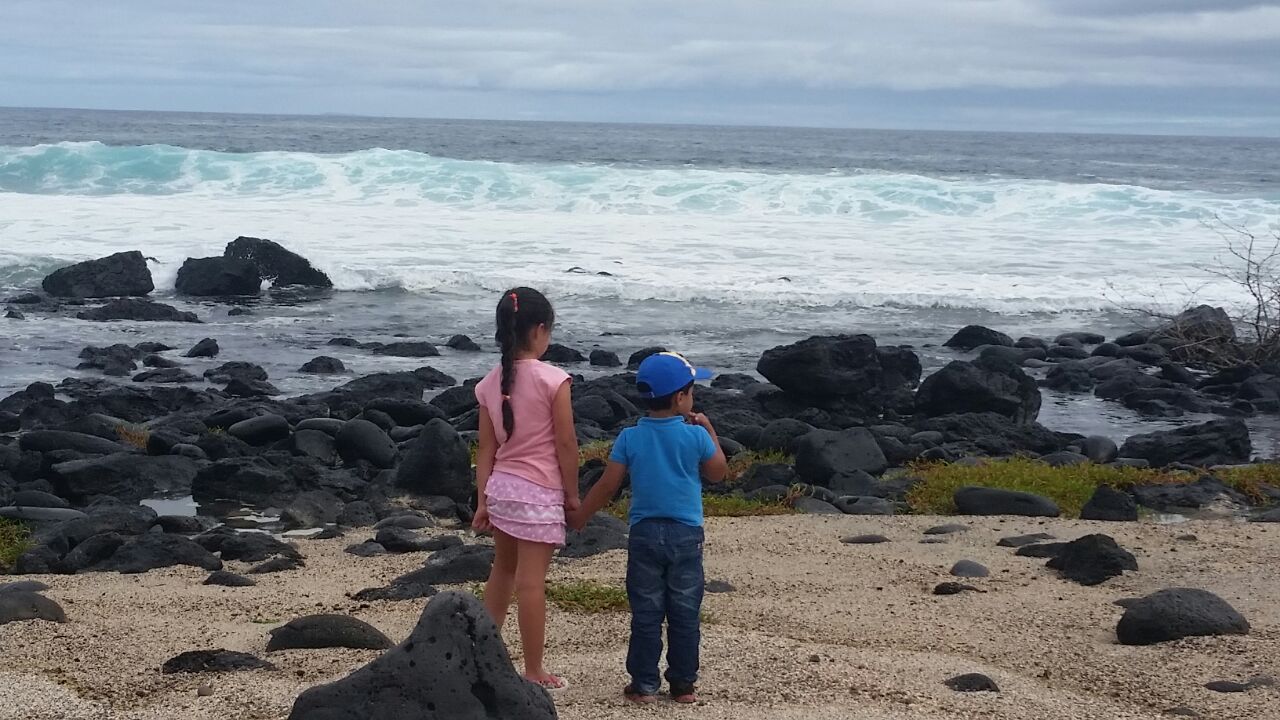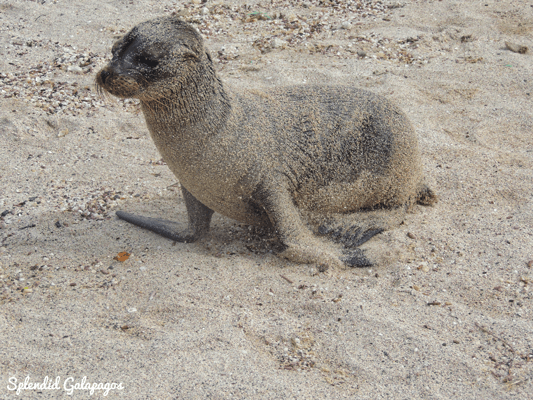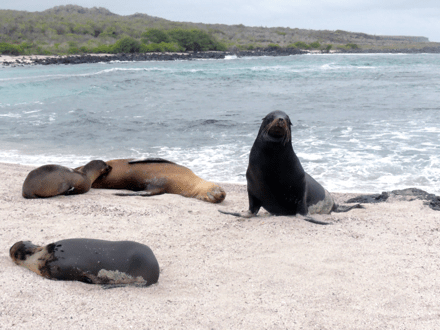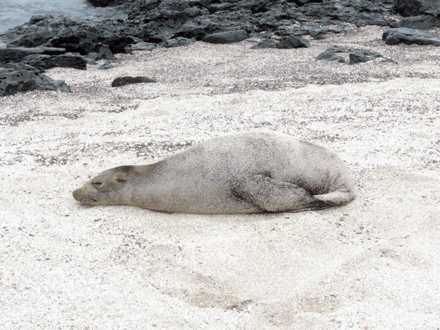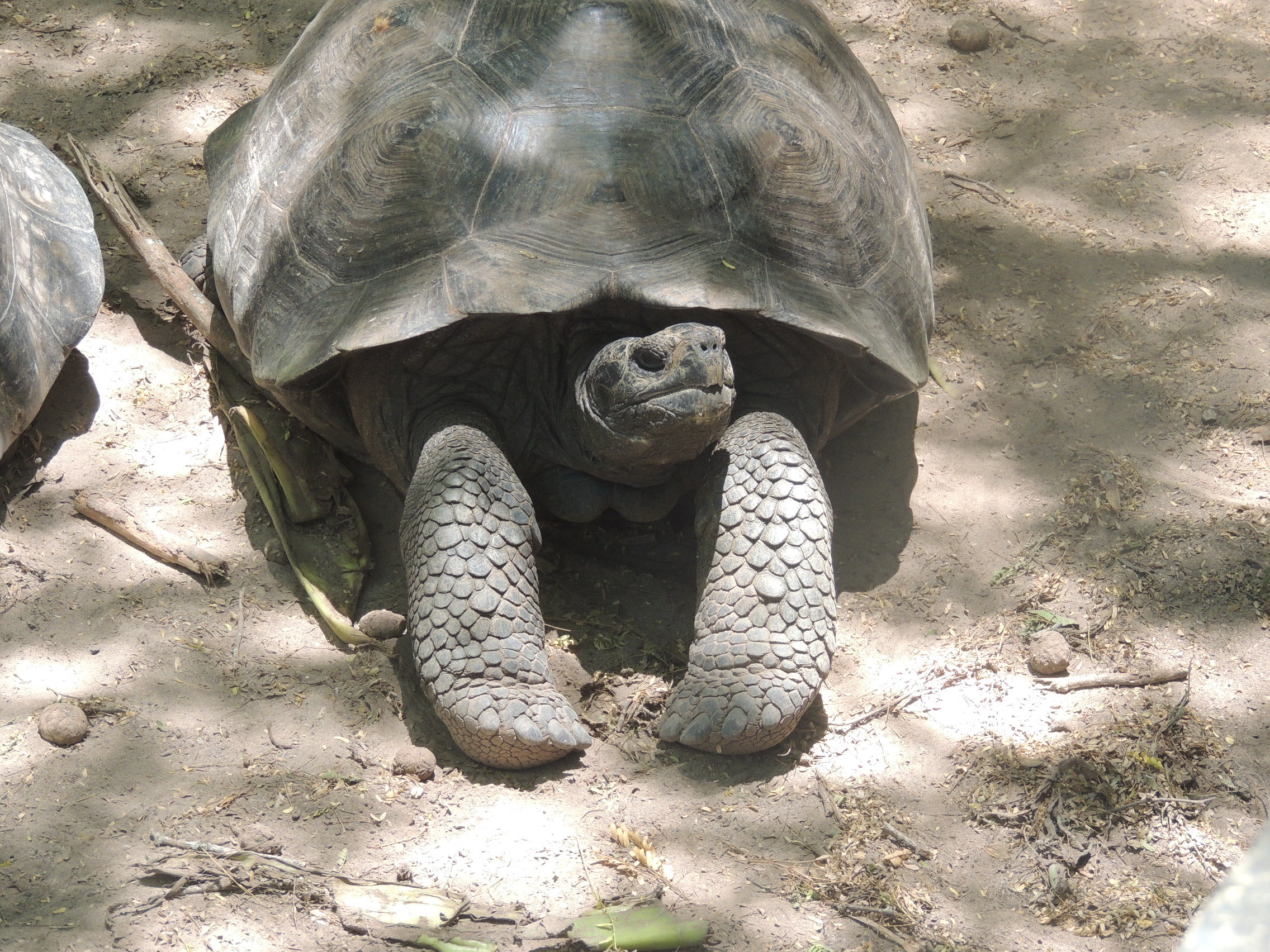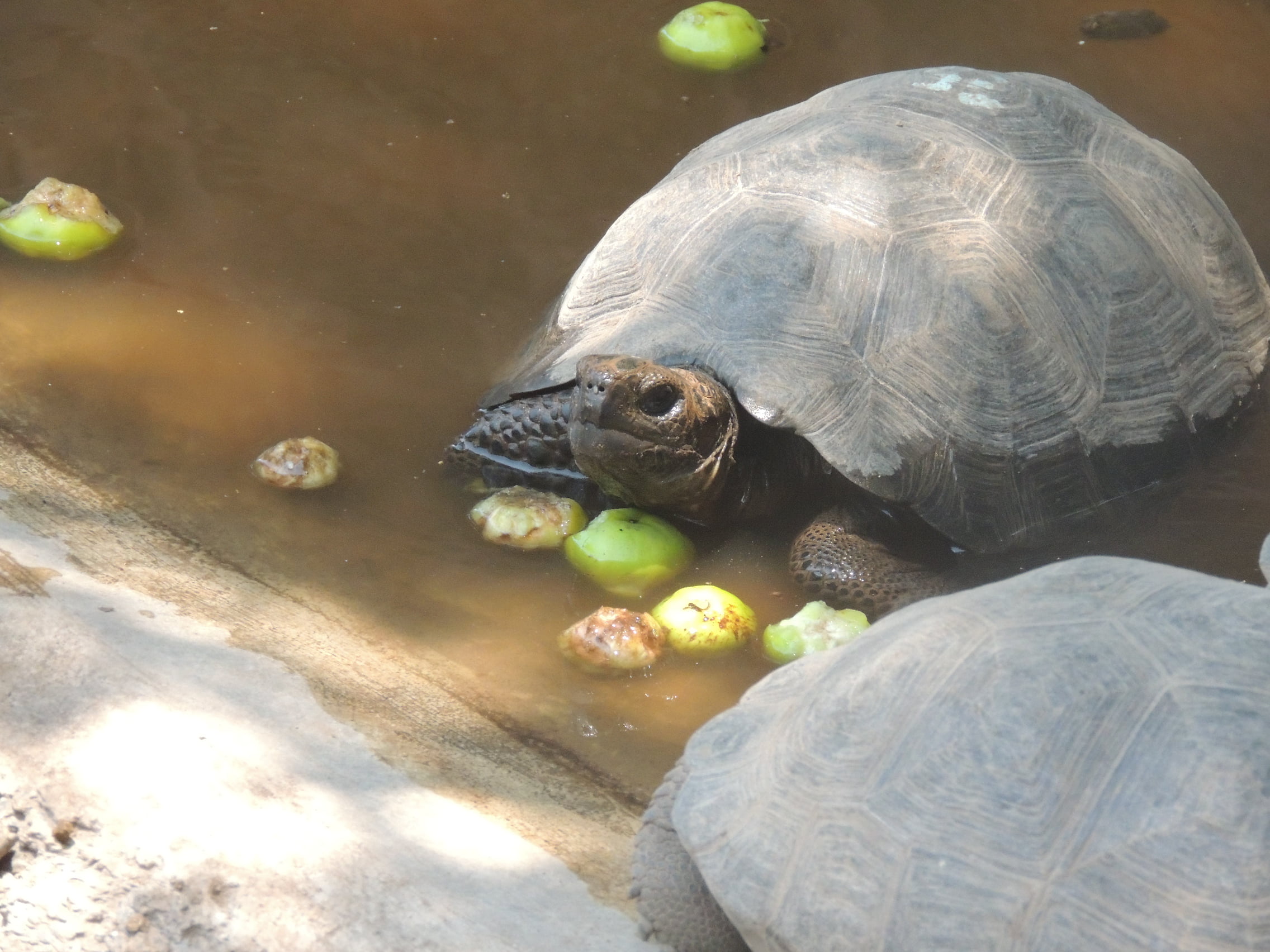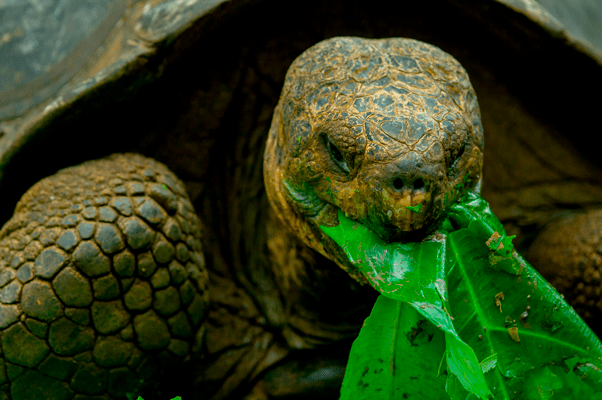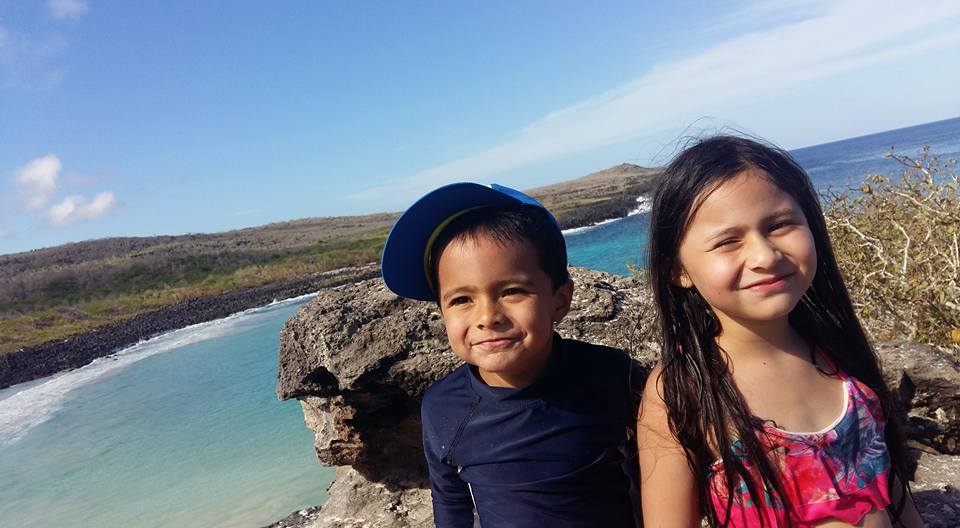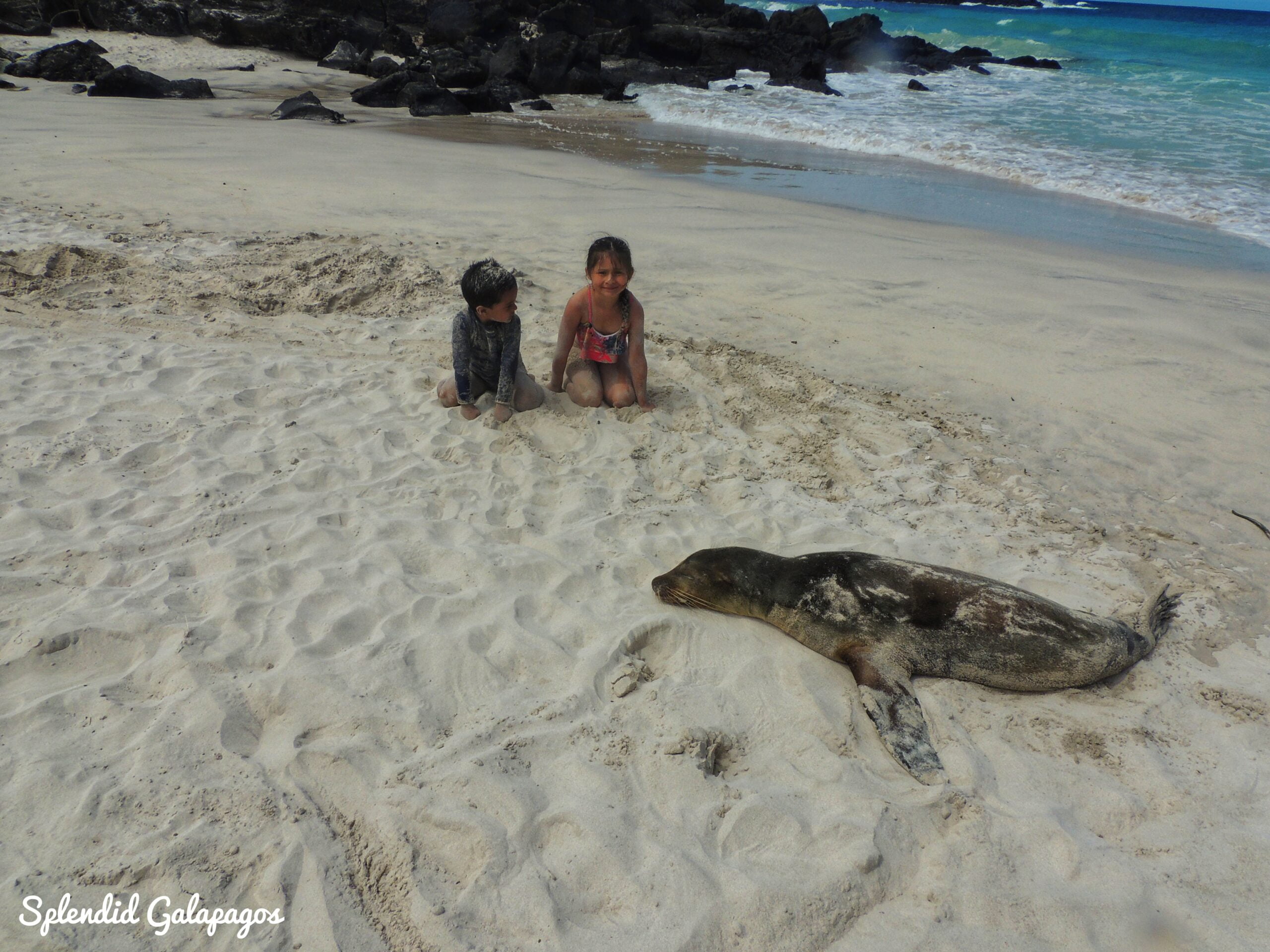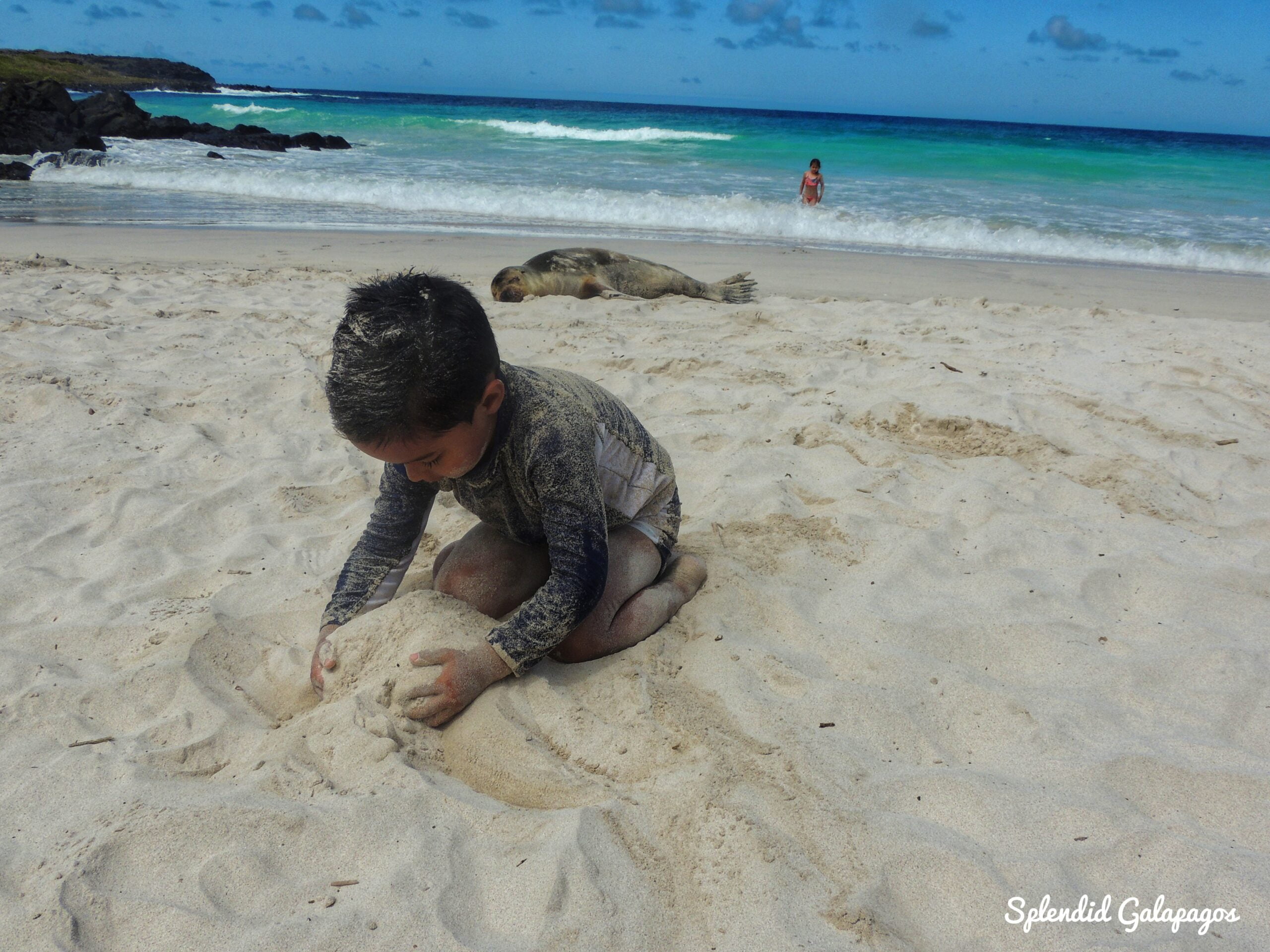SAN CRISTOBAL
San Cristobal Island is the fifth largest island in the Galapagos Archipelago, situated on the eastern side. It spans an area of 557 square kilometers and reaches a maximum altitude of 2395 feet. The island is home to approximately 7199 people. The name “San Cristobal” comes from the Patron Saint of the sea, Christopher, while its old English name, Chatham, honors William Pitt, the first Count of Chatham. The capital of the Galapagos Archipelago, Puerto Baquerizo Moreno, is located on San Cristobal Island.
In 1835, the renowned scientist Charles Darwin first landed on the Galapagos Islands, starting his exploration on San Cristobal Island. On the upper part of the island, you can find the “Laguna El Junco,” the largest source of fresh water in the entire archipelago. It was discovered years later by Manuel J. Cobos, which paved the way for colonization on San Cristobal Island.
Let’s delve into the history of San Cristobal Island. Manuel J. Cobos, born in the city of Cuenca in 1835, was already involved in the business world at a young age. He established his first company, “Casa Cobos Brothers,” with two partners. In 1862, Cobos visited the Galapagos Islands for the first time, searching for orchilla forests. Orchilla, a lichen widely used for dyeing carpets and fabrics, promised significant economic gains abroad. However, despite their efforts, they were unable to find it, resulting in substantial financial losses.
On September 16th, 1866, Cobos embarked on a journey to what is now Puerto Baquerizo Moreno on San Cristobal Island. Accompanied by several men, he explored the forest and settled eight kilometers inland, acquiring virgin forests at very low prices.
Over time, Cobos’ partners sold their shares, leaving only Manuel J. Cobos and his brother-in-law Monroy as owners of the business for about 40 years. Cobos took charge of production and administration on the island, while Monroy handled merchandise reception and commercialization in Guayaquil. They also brought farmers to the island to cultivate vegetables. Eventually, they discovered that the exploitation of wild cattle and the skins of seals or sea lions could also be a lucrative venture, as their hides were in high demand.
As their business prospered, Cobos became an arrogant and cruel man, particularly towards his workers, many of whom were dangerous criminals exiled from mainland Ecuador to the islands. He subjected them to severe punishments, some of which even resulted in death.
In 1885, Cobos and Monroy took a significant step by establishing a sugar mill called “El Progreso” on an eighty-hectare sugarcane plantation. In 1886, Cobos introduced his own coins made of cowhide, known as “cobonas.” While the workers could use these coins in the island’s store, they were condemned to a life of slavery on the Galapagos since the currency held no value outside the islands.
On January 5th, 1904, J. Manuel Cobos met his demise, as he was assassinated by his workers who had grown tired of his mistreatment. His life came to an end with two gunshots and two blows to his head.
TIJERETAS HILL, DARWIN BAY & PUNTA CAROLA
Frigate Bird Hill, also known as Tijeretas Hill, is a fantastic spot for birdwatching and snorkeling. The name of this place comes from the abundance of earwigs and frigate birds that call it home. The trails in this area lead to various breathtaking viewpoints. The first viewpoint is located at the top of Tijeretas Hill, offering a stunning aerial view of Kicker Rock (León Dormido) and Darwin Bay. This is one of the few places where you can observe both species of frigate birds nesting in the same colony.
The second viewpoint features a North American cannon that was acquired during World War II and later obtained by the Ecuadorian Navy in the early 1970s for military training. At the third viewpoint, you’ll find a statue of the renowned scientist Charles Darwin, paying tribute to his expedition to the Galapagos Islands. Along this trail, you can spot various wildlife species such as the Yellow Warbler, Great Frigatebird, Woodpecker Finch, Cactus Finch, Blue-footed Boobie, as well as flora like the Candelabra cactus, Matazarno, Prickly pear cactus, Incense tree, and Salt Bush.
Our adventure continues to Darwin’s Bay, an ideal location for snorkeling, swimming alongside sea lions, marine turtles, and observing tropical fish. Finally, we’ll visit Punta Carola, a pristine white sand beach surrounded by enchanting natural beauty. This area is home to a large colony of sea lions resting along the beach and elegant marine iguanas basking on the lava rocks. Punta Carola provides a perfect setting to relax and take in the view. Additionally, it is a popular destination for surfers, renowned as one of the best places in the world for surfing.
INTERPRETATION CENTER
The San Cristobal Interpretation Center opened its doors in August 1998, providing a comprehensive and well-documented account of the history of the Galapagos Islands. This center guides visitors through the various aspects of the islands’ history, including their natural environment, human presence, and conservation efforts.
The center is an integral part of the “Environmental Interpretation and Education Plan for the Galapagos Islands” project. It was established with the support of the Government of Spain through the Spanish Agency for International Cooperation for Development (AECID), in collaboration with the Galapagos National Park Directorate, and with the assistance of the Charles Darwin Foundation.
PLAYA MANN
Playa Mann is a delightful beach with white sand and scattered seashells, offering a perfect spot for relaxation and recreation. Here, you can enjoy the sight of sea lions peacefully resting on the sand. The crystal-clear water invites you to indulge in snorkeling adventures within the bay. Moreover, Playa Mann provides an idyllic setting for a romantic afternoon, where you can admire the breathtaking sunset views.
LA LOBERIA
Playa La Lobería is named after the large number of sea lions that inhabit this place and that rest on the sand and lava rocks along the coast. It is a beach formed by the remains of a pencil urchin and calcareous sand. Between June to November, it becomes one of the favorite places for surfers, since here you can find one of the largest wave breakers in the Galapagos Islands.
In this wonderful place, walking through the path, we can see several species of flora such as Galapagos Carpetweed, Leatherleaf, Puncture Weed, White Mangrove, Button Mangrove, Salt Bush, Chala, Palo Santo, Galapagos Cotton, Tiquilia. At the end of the beach, we can continue walking along a path that takes us to a coastal area and finally to a very striking cliff. This cliff is one of the few places, close to the community, where you can see the forked-tailed gull and the tropical bird in their nesting site; you can also see frigates, Nazca boobies, and pelicans flying. Return to La Lobería beach, snorkel activity, and enjoy sea turtles, sea lions, and many other tropical fish.
LA GALAPAGUERA
The Galapaguera de Cerro Colorado is located approximately 22.4 km or a 40-minute drive from Puerto Baquerizo Moreno, near Cerro Colorado, which lends its name to this place. It is a unique site where you can witness the endemic plant “calandrina galapagosa,” which is currently endangered.
The purpose of this enclosure is to enhance the conservation efforts for the tortoise population on the island. Many of the giant tortoises on San Cristobal Island disappeared during the time of Manuel J. Cobos’ colonization. These tortoises were hunted for their meat, oil, and leather. In the 1970s, hundreds of tortoises were transported to Santa Cruz Island, where they were bred in captivity at the Charles Darwin Foundation and the “Fausto Llerena” Breeding Center. After achieving their conservation goals, the tortoises were returned to their natural habitat at the Galapaguera on San Cristobal Island.
Visitors can explore this place by following a 900-meter pathway. Along the way, you will have the opportunity to observe tortoises in different stages, from hatchlings kept in incubators to special pens for newborns. Additionally, you will encounter adult tortoises freely roaming in their semi-natural environment.
EL JUNCO LAGOON
El Junco Lagoon gets its name from the presence of a plant called “junco” (Eleocharis mutataes) found along its shores and surrounding areas. This lagoon is situated in the upper part of San Cristobal Island, at an elevation of 687 meters above sea level. It is located within a small crater, which is itself located within the caldera of an extinct volcano.
During the winter season, from January to April, the area experiences heavy rainfall. El Junco has a surface area of 34,000 square meters and holds approximately 9 million gallons of water. Its maximum depth reaches 6 meters. The lagoon is solely fed by rainwater, and during the dry season, its water level can decrease by up to 1 meter. However, heavy rains can cause the water level to rise, eventually overflowing and forming a stream. Visitors may often spot frigate birds bathing to remove salt from their feathers, as well as white-cheeked pintails and common gallinules.
Exploring the lagoon, you can follow a pathway that takes approximately an hour and a half to complete. Along the way, you will have the opportunity to observe a wide variety of wildlife species, including the Yellow Warbler, Magnificent Frigatebird, Galapagos Flycatcher, White-cheeked Pintail, Galapagos Petrel, Woodpecker Finch, and Small Tree Fin. Additionally, there is a rich diversity of flora species to discover, such as Galapagos Miconia, Galapagos Tree Fern, and Aquatic Sedge.
PUERTO CHINO
Puerto Chino is located 24.5 km away from Puerto Baquerizo Moreno, and it takes around 40 minutes to reach here by car. From the parking area, it’s an additional 15-minute walk. This is a wonderful spot for relaxation, with its beautiful fine white sand and calm waves. You’ll often find sea lions resting on the beach or playing in the water, creating a delightful atmosphere.
Another attraction in Puerto Chino is the Flamingos Pond, where you can observe these graceful birds feeding. It’s a great opportunity to take stunning photographs and enjoy a delightful barbecue experience.
As you explore the area, keep an eye out for various wildlife species such as the Lava lizard, Woodpecker Finch, Small Ground Finch, Cactus Finch, and Medium Ground Finch. You’ll also come across different types of flora, including the Galápagos Rock-Purslane, Curve-Spined Lecocarpus, Manzanillo, and Salt Bush.
Puerto Chino offers a tranquil and picturesque environment, allowing you to unwind, appreciate nature, and capture beautiful moments.
LOBOS ISLAND
Isla Lobos is a small island located about 45 minutes away from Puerto Baquerizo Moreno, northwest of San Cristóbal Island. When you visit this island, there are various activities for you to enjoy.
As you step off the boat onto the island, you will be greeted by adorable small sea lions. From there, you will embark on a one-hour journey along a sandy path, with volcanic rocks and dry vegetation. Along the way, you will have the opportunity to observe fascinating wildlife such as lava lizards, blue-footed boobies, nesting frigate birds, and marine iguanas.
Next, you will have the chance to go snorkeling near the island’s coast. This activity allows you to swim alongside sea lions, sea turtles, rays, colorful reef fish, tropical fish, and watch marine iguanas feeding underwater. It’s an incredible experience to witness the marine life in their natural habitat.
To wrap up your visit, you will have some time to relax on a beautiful beach with turquoise waters and white coral sand. It’s the perfect spot to unwind and enjoy the stunning surroundings.
Overall, Isla Lobos offers a range of activities and natural beauty for you to explore and appreciate during your visit.

